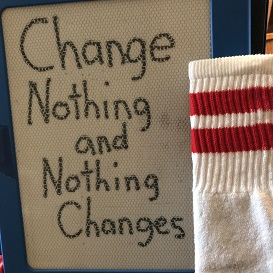

rqt_gui_py_node_8448 Introspecting the ROS graph (with only a ROS master and Rqt graph) Once you’ve launched rqt_graph, you can see a new anonymous node on your graph. To see where is the executable: $ which rqt_graph

You can use this executable, it will also create a node like with the rosrun command. When installing Rqt, there is an executable created for the rqt graph plugin (and some other Rqt plugins). Launch rqt_graphįirst, you need to have a ROS master running in your environment.Īfter having launched roscore, start rqt graph with: $ rosrun rqt_graph rqt_graph bashrc file should already contain the command line source /opt/ros/noetic/setup.bash.
#Visualize you nothing change install
To install rqt: $ sudo apt install ros-noetic-rqtĪfter that make sure to run source ~/.bashrc. If you installed the “Desktop” or “Desktop-Full” version of ROS – from the installation guide here – you already have rqt_graph which is a Rqt plugin. Maybe a node is not correctly connected to another, or there are 2 nodes publishing on a given topic instead of just one, which is why you get some weird values on the subscriber side.

When you have a bug somewhere due to communication between nodes, you will be able to easily spot the problem.This is really useful so you can take better decisions for the future new parts of your application. You’ll get a global overview of your system.Using rqt graph will help you mostly for those two things: So, you end up with many nodes and topics, and it might become harder to debug. For example, you could use the move_group node (Moveit) for motion planning, the joy node to get data from a joystick controller, etc. Also, and that’s one of the ROS strengths, you’ll use existing ROS nodes in your application. You’ll have more and more nodes, with more and more communication between them (topics, services, actions).
#Visualize you nothing change code
As your application grows (more sensors, more actuators, more ways to control your robot, …), so does your code base.Ĭheck out ROS For Beginners and learn ROS step by step. When you develop with ROS you usually organize your work into packages and nodes. This is due to the way services have been implemented. Note: you can’t see ROS services in rqt graph, only topics. The nodes and topics will be displayed inside their namespace. On one window you can see all your running nodes, as well as the communication between them. With rqt graph you can visualize the ROS graph of your application. Rqt graph is a GUI plugin from the Rqt tool suite.


 0 kommentar(er)
0 kommentar(er)
